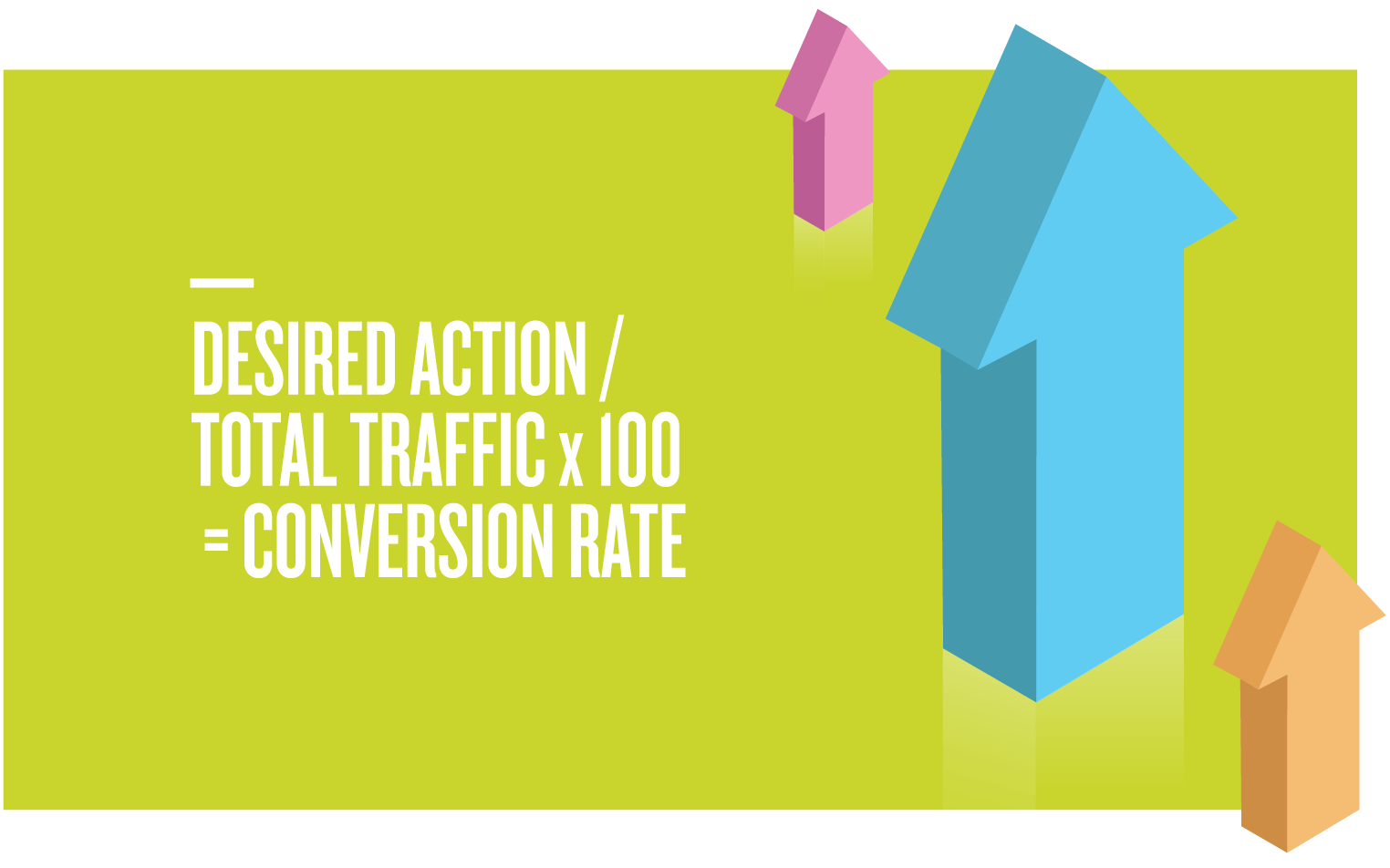4 Ways to Improve Your Website’s Conversion Rate
Using better marketing and effective digital ad campaigns to increase traffic to your website is a great first step… but will you be able to capitalize on the opportunity and turn visitors into leads? In this post, we take a dive into understanding Conversion Rate Optimization - or CRO - and putting it to work for you.
What is Conversion Rate Optimization (CRO)?
CRO is the practice of enhancing your website to convert traffic into qualified leads. For private and independent schools, you might define a qualified lead as someone who registers for your open house, reaches out to request more information, downloads a financial aid package, or submits a registration form.
Doing the Math: Calculating your conversion rate
Conversion rate is typically measured and communicated as a percentage of users completing the desired action on your website or landing page.

Here’s an example from School ABC:
School ABC wants to measure their conversion rate on a landing page promoting an upcoming virtual open house event. In this case, an open house registration will be their definition of a qualified lead. They will take their open house registrations and divide that by the total number of visitors to their open house landing page (using the same timeframe for each) and find its percentage.

CRO in Action: Optimizing conversion rates for your school
A better conversion rate is always achievable through a mix of good design and layout, compelling copy, strong calls-to-action, and other online marketing tactics. Here are four ways to optimize CRO that you can put into action today.
1. Review your traffic
Before we calculate the conversion rate, we want to ensure we’re measuring it against the right traffic. Analyzing bad traffic will lead to bad data - and even worse decision making.
Review your website traffic to get a good grip on the following key issues:
Traffic sources: You need to know which channels are sending you the most traffic - and compare the results of paid campaigns against organic visits. Be sure to take a look at your traffic by region, as it lets you know if you're gaining traction within your geographic target market.
Page visits per session: Aim for more page views per session as a good indicator of user interest. Higher page visits per session from one source usually hint at the quality of traffic from that segment.
Time on page: The time spent on different web pages is a good indicator of the perceived value that content has to high-quality visitors. You'd be better off focusing your time and money on traffic sources with a higher 'time on page' metric, regardless of how much traffic you're getting from others.
Return visitors: As much as it's a joy to have new visitors, they require more work than returning ones. Analytic tools will help you understand why these users keep coming back to your website, and make the adjustments needed to lure them back every time.
Top pages: Top pages are hard to review from just one session. Popularity is sometimes driven by temporary surges in traffic - for example, a newly launched YouTube video referral. This metric should be measured many times over, and you can grab the advantage of a page's popularity to optimize your website for search engines.
Expert Tip: For many schools, separating out current families and prospective families is a valuable segmentation exercise when evaluating CRO. A simple segment for this purpose is to choose the new users segment and run your analysis on those. You may also want to create a segment based on behaviour. Looking at users who have visited admissions content on your site can help you understand where you’re losing prospective families - or driving conversion in relation to admissions content specifically.
2. Identify the problems
Having a good view of your web performance allows you to create a list of the things you might be doing wrong (we like to think of them as opportunities) - and determine tests you want to run in order to fix them.
For example, any of the following could be an issue:
Your headings are sending the wrong message, leading to high bounce rates
Users are struggling to find critical resources on your website because of poor layout
You’re sending users to a third party piece of software or external form - and losing your data trail
Navigating the website is complicated or not intuitive
Your call-to-action copy is ineffective or the buttons/links are not obvious
Your general copy isn’t compelling people to action
You could also identify opportunities to add more features that enhance the user experience, like feedback forms and virtual school tours.
3. Test to get rid of the guesswork
Once you've identified the key metrics that need a boost on your website or landing page, experiment with two or more versions of each one to determine which one has maximum impact. In this case, A/B testing would typically pit the original version of your content as ‘A’ and a new variable as ‘B.’ Depending on what you hope to learn, you may consider testing things like the copy or design or placement of your call-to-action button on the inquiry page or rewrite an existing landing page and measure the results.
There are so many advantages to this type of split or A/B testing:
It helps you make data-driven decisions
It can identify and resolve user problems (like when they're finding it hard to use your sign-up form)
It helps you to minimize bounce rates
It allows you to increase ROI from existing traffic
Expert Tip: Be sure to limit your testing to one change or variable at a time to ensure you are measuring fairly and interpreting the data correctly.
4. Implement and review
Once you've locked down a working strategy, deploy the changes to your website - then test continually for future considerations. It's good to schedule periodic reviews to help you find anything that's no longer working and prioritize it in the next CRO process.
Better data leads to better decisions - and better return on your marketing investment. Adopting these CRO tips for your private or independent school will place you ahead of competitors and increase your ROI from digital marketing.
Want to learn more about CRO? Check out our blog post Conversion Rate Optimization 101: Debunking the Myths.
Contact Metric for help with digital campaigns that grow your private or independent school.





